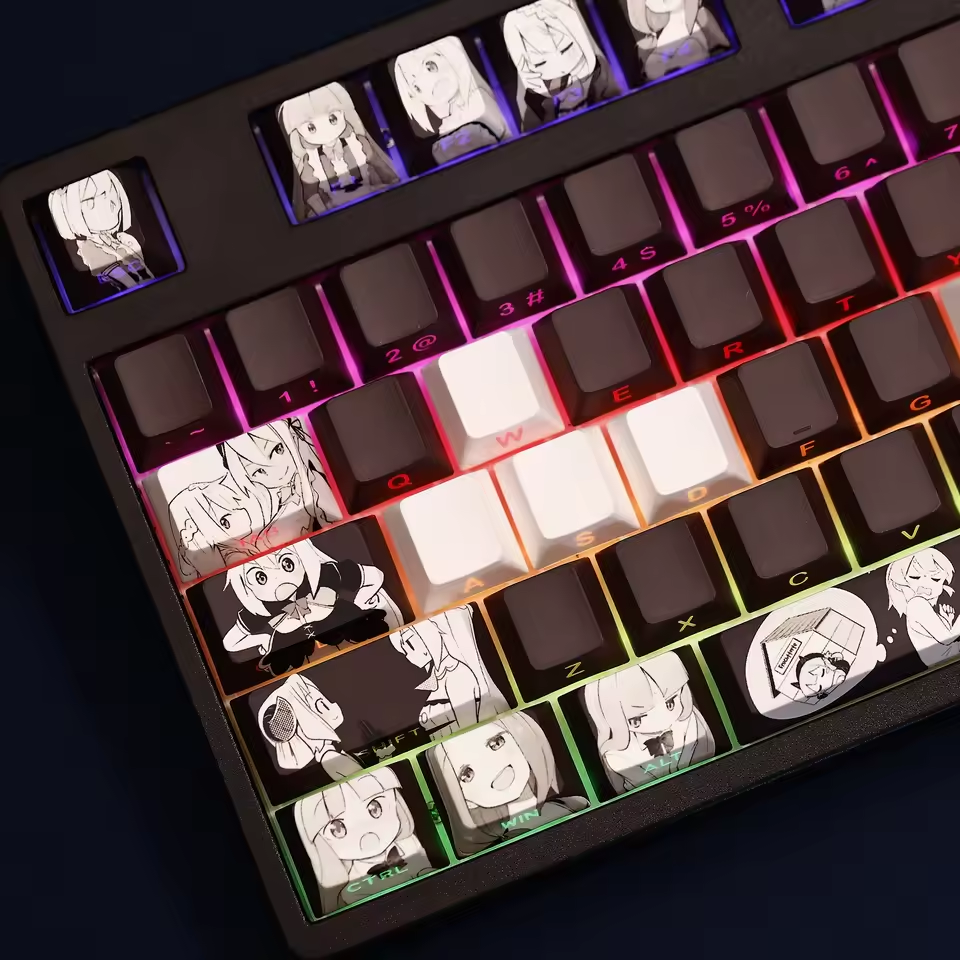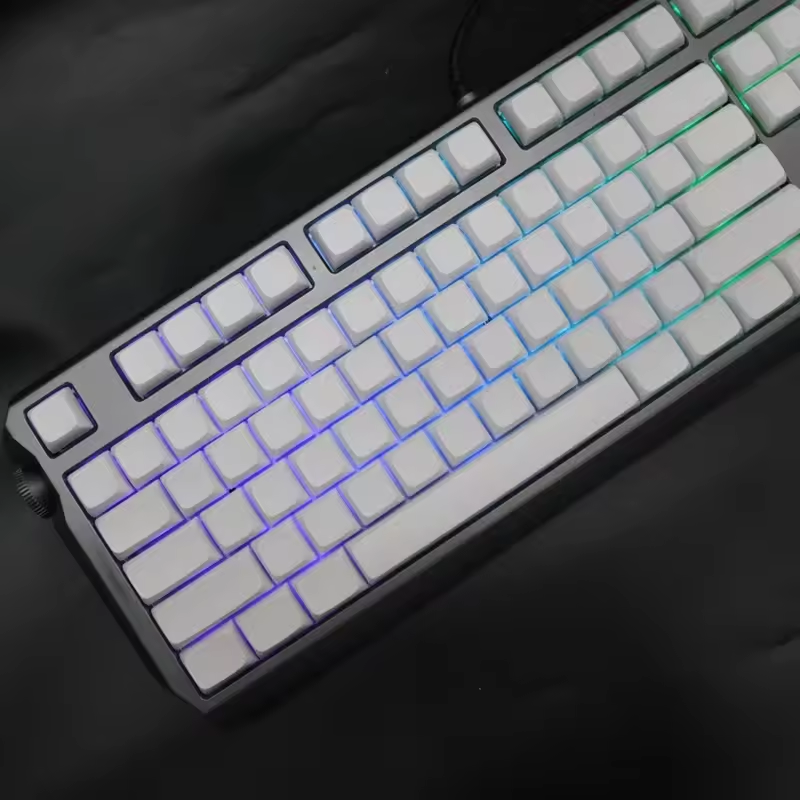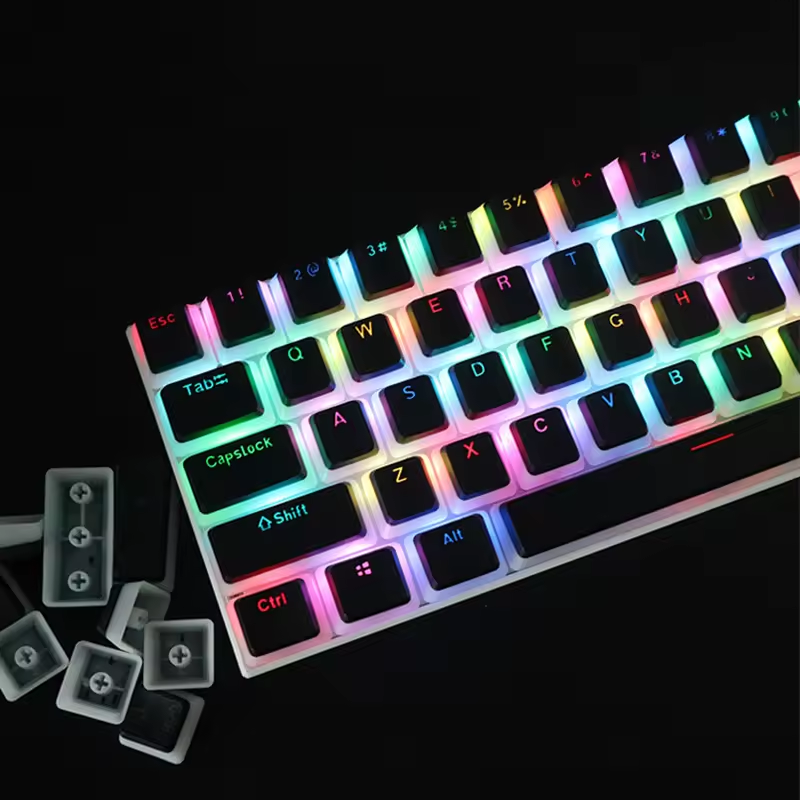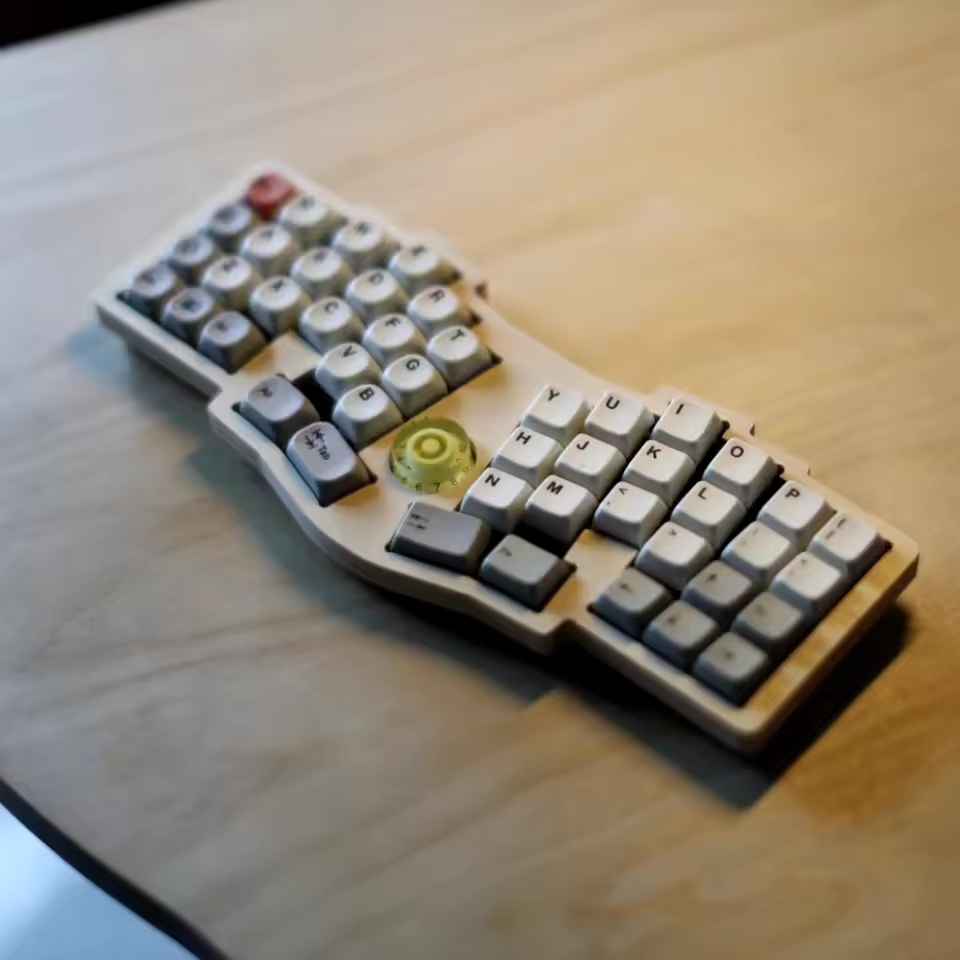What Are Mechanical Keyboard Switches?
Mechanical keyboard switches chart are the mechanism beneath each key that registers key presses. These switches are designed for precision and durability, making them popular for gamers and typists. Unlike traditional keyboards, mechanical switches offer unique tactile feedback for a better typing experience.

Overview of Switch Types
Mechanical keyboard switches come in three main types: linear, tactile, and clicky. Linear switches provide smooth keystrokes without feedback or sound. Tactile switches have a noticeable bump during key activation. Clicky switches combine tactile feedback with a loud “click” sound. The choice depends on personal preference for feel and noise.
How They Differ from Rubber Domes
Rubber dome keyboards use a membrane beneath the keys to register presses. They are quieter and cheaper but lack precision and durability. Mechanical switches are more responsive and last longer due to their advanced design. Rubber domes feel less satisfying for extended typing or gaming sessions compared to mechanical switches.
Key Features of Mechanical Keyboard Switches
Mechanical keyboard switches offer distinct features that make them excellent for various needs. Let’s explore key aspects that set them apart.
Actuation Force and Travel Distance
Actuation force refers to the pressure needed to register a keypress. Mechanical switches vary in force requirements. Light switches, requiring less force, are great for fast typing or gaming. Heavier switches offer more control, reducing accidental keypresses. Travel distance is the depth a key moves before activating. Short travel distances improve typing speed, while longer distances enhance feedback.
Tactility and Sound Profiles
Mechanical switches offer different tactile and sound feedback. Some switches are smooth and silent, like linear ones. Others provide a tactile bump, with or without sound, like tactile and clicky switches. Quiet switches suit office spaces, while loud ones appeal to enthusiasts seeking audio feedback. The choice depends on your environment and preference.
Durability and Lifespan
Mechanical switches surpass rubber domes in durability. Most switches last for 50 million keystrokes or more. This makes them reliable for long-term use. High-grade materials and precise engineering enhance their longevity. This feature is ideal for individuals who type or game extensively.
Types of Mechanical Keyboard Switches
Mechanical keyboard switches come in three main types: linear, tactile, and clicky. Each type offers a unique typing or gaming experience. Understanding their differences helps you choose the right one for your needs.
Linear Switches
Linear switches provide smooth and consistent keystrokes. They do not have tactile feedback or audible clicks. This makes them ideal for fast typists and gamers who prefer uninterrupted keystrokes. Linear switches offer a quieter typing experience compared to other types.
Popular linear switches include Cherry MX Red, Gateron Red, and Razer Yellow. These switches typically require a light actuation force, enhancing speed and responsiveness. Their simplicity and smooth operation make them a favorite for gaming-focused users.
Tactile Switches
Tactile switches have a noticeable bump during actuation. This tactile feedback helps users register keypresses without bottoming out. These switches strike a balance between typing speed and accuracy.
Examples of tactile switches include Cherry MX Brown, Gateron Brown, and Razer Orange. They are quieter than clicky switches but still provide satisfying feedback. Tactile switches are perfect for typists who want a precise and responsive typing experience.
Clicky Switches
Clicky switches combine tactile feedback with a distinct clicking sound. The audible click provides extra confirmation of keypresses. These switches are popular among enthusiasts seeking tactile and auditory satisfaction.
Prominent clicky switches include Cherry MX Blue, Gateron Blue, and Razer Green. However, they are loud and may not be ideal for shared spaces. Clicky switches are often chosen by users who enjoy a traditional-style typing experience.
By comparing these switch types, you can determine which suits your typing or gaming needs. Remember to consider noise level, feedback, and force requirements when making your choice.
Popular Mechanical Keyboard Switch Brands
When choosing a mechanical keyboard, switch brands play a major role in quality and performance. Several renowned companies dominate the market, offering unique switch designs and features. Let’s explore the most popular mechanical keyboard switch brands to help you make an informed decision.
Cherry MX Switches
Cherry MX switches are among the most famous and reliable in the mechanical keyboard market. Known for their durability and high-quality build, they are a favorite for enthusiasts and professionals alike. These switches often boast a lifespan of over 50 million keystrokes, ensuring long-term performance.
Cherry MX switches come in various options, including linear (Cherry MX Red), tactile (Cherry MX Brown), and clicky (Cherry MX Blue). Each type serves different user preferences, whether it’s silent operation, tactile feedback, or audible clicks. Thanks to their consistent performance and trusted reputation, Cherry MX switches are often considered the gold standard in mechanical keyboards.
Razer Switches
Razer switches are custom-designed for gaming and productivity, offering a tailored experience for every user. Developed through collaboration with leading switch manufacturers, Razer provides linear, tactile, and clicky options.
Popular choices include Razer Green (clicky and tactile), Razer Orange (tactile and silent), and Razer Yellow (linear and fast). These switches are optimized for quick actuation and precision, making them ideal for competitive gaming. Razer’s switches also feature extended durability, with some models rated for up to 80 million keystrokes.
Razer keyboards are paired with RGB lighting and gaming-centric designs, enhancing their appeal for gaming enthusiasts.
Kailh Switches and Gateron Switches
Kailh and Gateron switches are known for affordability and variety. These switches are often compared to Cherry MX but come at a lower price point. Popular Kailh models include Kailh BOX Red (linear) and Kailh BOX White (clicky).
Gateron switches are celebrated for their smoothness, particularly in linear options like Gateron Reds. They offer switches similar to Cherry MX but with a softer and smoother feel. Gateron switches cater to both budget users and enthusiasts who seek a unique typing experience without compromising on quality.
By exploring these brands, you can find switches that meet your needs, whether for gaming, typing, or both. Each brand offers distinct benefits, making them stand out in the world of mechanical keyboards.
Mechanical Keyboard Switch Charts
Understanding mechanical keyboard switches through charts can make your choice easier. These charts visually display key differences, aiding both beginners and experts. Two essential aspects to compare are actuation force and sound level with tactility.
Switch Comparison by Actuation Force
Actuation force measures how much pressure is needed to press a key. Mechanical switches vary widely in force requirements.
- Light switches: Examples include Cherry MX Red or Gateron Red, requiring around 45g of force. These switches are ideal for fast typing and gaming, minimizing finger strain.
- Medium-force switches: These need 55-60g, such as Cherry MX Brown or Razer Green. They offer control and a tactile feel, perfect for typists.
- Heavy switches: Requiring 65g or more, these are good for users who prefer strong feedback or reduced accidental keypresses. Options include Kailh BOX Whites.
By comparing actuation force, you can match your typing style to the right switch.
Sound Level and Tactility Analysis
Sound level and tactility define a switch’s overall feel and sound. Some users prioritize silence, while others seek audible feedback.
- Silent switches: Linear switches like Cherry MX Silent Red or Razer Yellow generate minimal noise. They’re ideal for offices and shared spaces.
- Moderate sound and tactility: Tactile switches like Cherry MX Brown or Gateron Brown offer a quiet bump. They suit those balancing typing feedback without being too loud.
- Loud and clicky switches: Cherry MX Blue, Razer Green, or Kailh BOX White produce a pronounced “click” during activation. These are perfect for enthusiasts in non-shared environments.
A sound and tactility chart can compare each switch’s noise and feedback level. It aids in selecting switches fit for your environment and preference.
Using charts for actuation force and sound level ensures informed switch selection based on your specific needs.
Choosing the Right Switch for Your Needs
Finding the perfect mechanical keyboard switch is crucial for satisfaction and performance. Your needs and preferences greatly influence the decision. Let’s explore factors to help you choose the right switch type.
Gaming vs. Typing Preferences
Switch choice often depends on whether you prioritize gaming or typing. Gamers typically prefer fast and smooth switches for speed and responsiveness. Linear switches like Cherry MX Red or Razer Yellow are popular gaming choices.
For typists, tactile or clicky switches offer precision and satisfying feedback. Cherry MX Brown and MX Blue provide this accuracy. Clicky switches, while louder, enhance the typing experience. Typists tend to favor switches that reduce fatigue during long sessions.
If you do both gaming and typing, versatile switches like tactile ones may suit you better. These provide balanced feedback and control. Consider how much noise and feedback you want before settling on a choice.
Comfort and Ergonomics
Comfort and ergonomics are essential for long-term use. The actuation force greatly affects comfort during extended typing or gaming. Light switches requiring less force reduce finger strain. This is helpful for fast-paced activities like competitive gaming.
Heavy switches create strong tactile feedback, providing better control but requiring more effort. These are ideal for users seeking accuracy and deliberate keystrokes.
Ergonomic factors such as travel distance also play a role. Short travel distance switches improve speed and minimize fatigue. Longer travel distances offer better feedback, reducing accidental keystrokes.
Consider your environment and usage when making your choice. Office users may opt for quieter switches like linear or tactile ones. Enthusiasts often choose switches based on preference and satisfaction.
By matching your gaming, typing, and ergonomic needs with the right switch features, you’ll ensure maximum comfort and functionality.
Tips for Testing and Buying Switches
Choosing the right mechanical keyboard switch involves hands-on testing and informed decisions. Let’s discuss practical tips to ensure you pick the best switch for your needs.
Trying Out Switch Testers
Switch testers let you experience different switches without buying a full keyboard. These small devices feature multiple switches, enabling you to feel their actuation force, travel distance, and sound profiles.
Here’s why switch testers are helpful:
- Hands-on experience: You can test linear, tactile, and clicky switches to find your preference.
- Sound level comparison: Assess noise levels to see which fits your environment, especially for shared spaces.
- Avoid guesswork: Testing reduces the risk of regretting an expensive purchase.
Many retail stores and online shops sell switch testers at reasonable prices. If you can’t access one, try visiting a computer store to test demo keyboards.
Reading Reviews and User Feedback
Before buying a mechanical switch, look for detailed reviews and user experiences. Reviews offer insights into switch performance, durability, and compatibility.
Steps to follow:
- Check professional reviews: Trusted tech websites and blogs analyze switches with data on actuation force and sound level.
- Browse user forums: Communities like Reddit share real-life experiences with various switch brands.
- Look for comparisons: Search for charts or videos comparing multiple switches side-by-side.
- Prioritize insights: Focus on feedback that matches your use case, like gaming or typing preferences.
By combining testing with research, you can make an informed decision that aligns with your needs. Whether you prioritize comfort, speed, or sound, these tips ensure a satisfying mechanical keyboard experience.